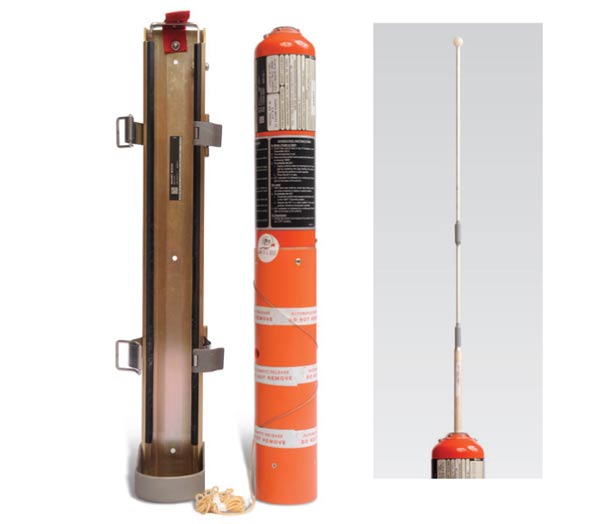Malaysia Airline MH370 & the Emergency Locator Transmitter
We are baffled that we received no signal from the Emergency Locator Transmitters (ELT) or the emergency beacons. ~ Tan Sri Rozali Daud, Royal Malaysian Air Force
The emergency locator transmitter has been discussed very little during the thousands of hours of media coverage for Malaysia Airline flight MH370. The transmitter’s sole purpose is to radiate a signal upon impact on land or sea. Though many “expert” scenarios suggest flight MH370 may have crashed, the question of why wouldn’t the ELT have radiated a locating signal is rarely mentioned.
On March 12, CBS News aviation safety consultant Capt. Chesley Sullenberger told CBS News host Scott Pelley that while the Boeing 777 is equipped with an emergency locator beacon, “the transmitters wouldn’t function properly if they were underwater.” Depending on what model the aircraft had onboard, Sully’s conclusion may not be totally accurate. Although it has not been confirmed, the Boeing 777-200 was likely equipped with a Honeywell ELT and possibly the RESCU406® model. According to the manufacturer’s product information, if the aircraft crashed the ELT would begin immediately radiating a signal on 3 different frequencies: Civil 121.5MHz, Military 243MHz, and Emergency COSPAS-SARSAT 406.025MHz.
A Reuters article last year found that the the Honeywell ELT is delivered fully assembled and is installed by Boeing. In addition, because of condensation issues raised at the time, the article also revealed that:
The ELT must pass a test to prove it can be submerged under one meter of water for one hour.
A Bloomberg article published 2 days after the disappearance of MH370 said that Steve Brecken, a Honeywell spokesman, declined to comment beyond a company statement expressing sympathy for relatives and loved ones of Flight 370’s passengers and crew.
A March 22 Business-Standard.com article went further, stating that an unnamed Honeywell spokesman said:
“We are not conducting our own inquiry or reviewing the system’s performance. We are supporting the wider investigation of the incident as and when requested to do so. The ELT operates in a dormant state and cannot be switched off manually from the cockpit but can be activated manually.”
Ironically, it was the ability of the ELT to be powered independently of the aircraft’s electrical system that was at the root of a safety investigation last year. The Safety concerns from the Honeywell ELT stemmed from issues with flammable lithium-ion batteries on the Boeing 787 Dreamliner. The Honeywell ELT model installed in aircraft contain a set of chemical batteries using a Lithium-Manganese Dioxide (LiMnO2) composition that allow the ELT, as required by regulation, to operate in an emergency situation entirely independent of the aircraft’s electrical power system.
On January 16, 2013, The United States Federal Aviation Administration (FAA) issued an Emergency Airworthiness Directive concerning the batteries.
This emergency AD was prompted by recent incidents involving lithium ion battery failures that resulted in release of flammable electrolytes, heat damage, and smoke on two Model 787-8 airplanes. The cause of these failures is currently under investigation. These conditions, if not corrected, could result in damage to critical systems and structures, and the potential for fire in the electrical compartment.
Six months later, the UK’s Air Accidents Investigation Branch (AAIB) specifically recommended that the Honeywell Rescu 406® ELT be made “inert” until it can be properly inspected.
Published 18 July 2013
Safety Recommendation 2013- 016
It is recommended that the Federal Aviation Administration initiate action for making inert the Honeywell International RESCU406AFN fixed Emergency Locator Transmitter system in Boeing 787 aircraft until appropriate airworthiness actions can be completed.
Subsequently, Boeing issued a special request to operators to inspect the aircraft’s ELT equipment.
Today, Boeing is asking specific operators of 717, Next-Generation 737, 747-400, 767 and 777 airplanes to also inspect aircraft with the Honeywell fixed ELT.
Although the FAA stopped short of requiring airlines to disable or remove Honeywell ELTs, they did recommended that inspections should ensure that wires are properly routed, and should look for pinched wires or signs of unusual moisture or heat.
Unfortunately, neither Honeywell nor Boeing have publicly commented on the status of their Emergency Locator Transmitter and Malaysia Airline flight MH370.






